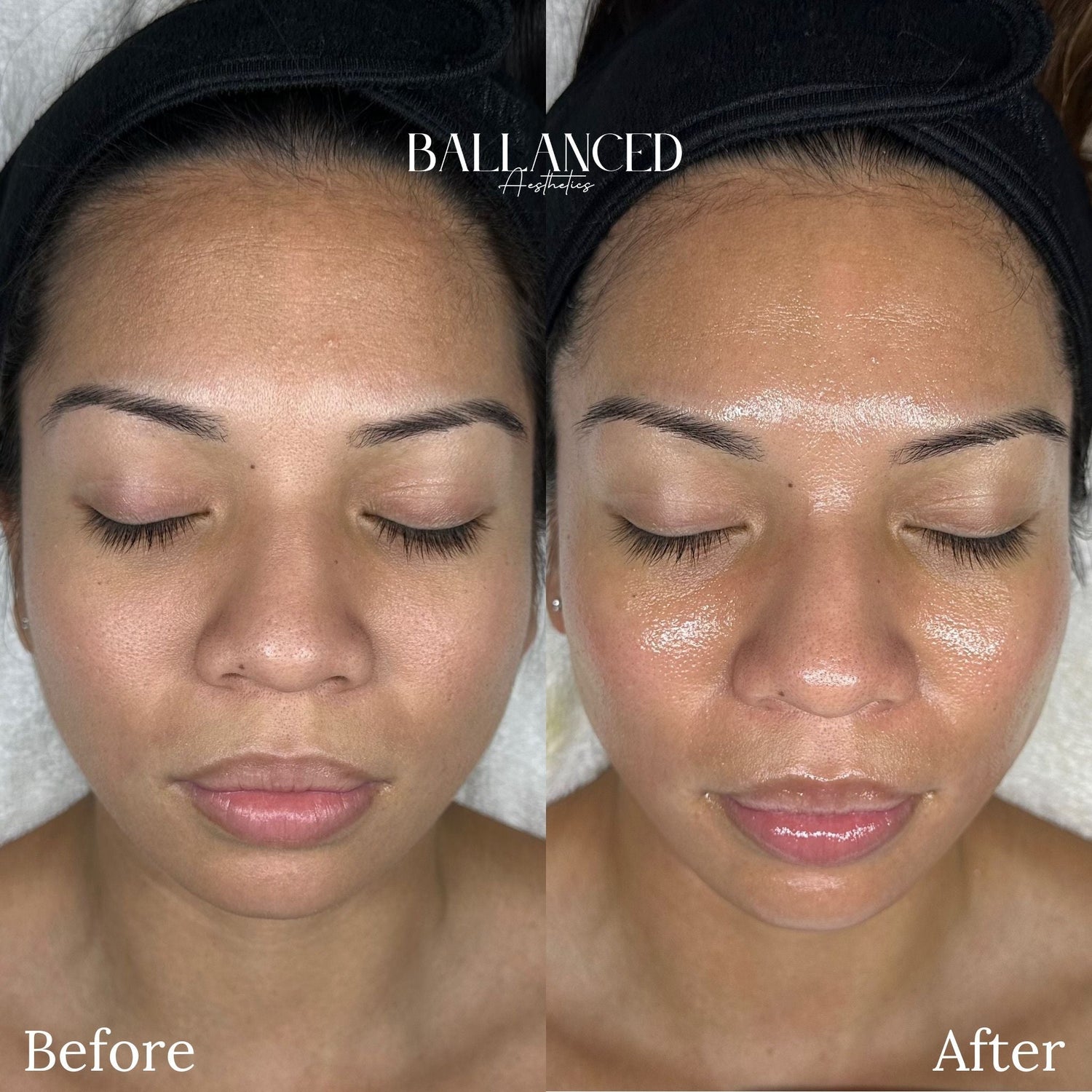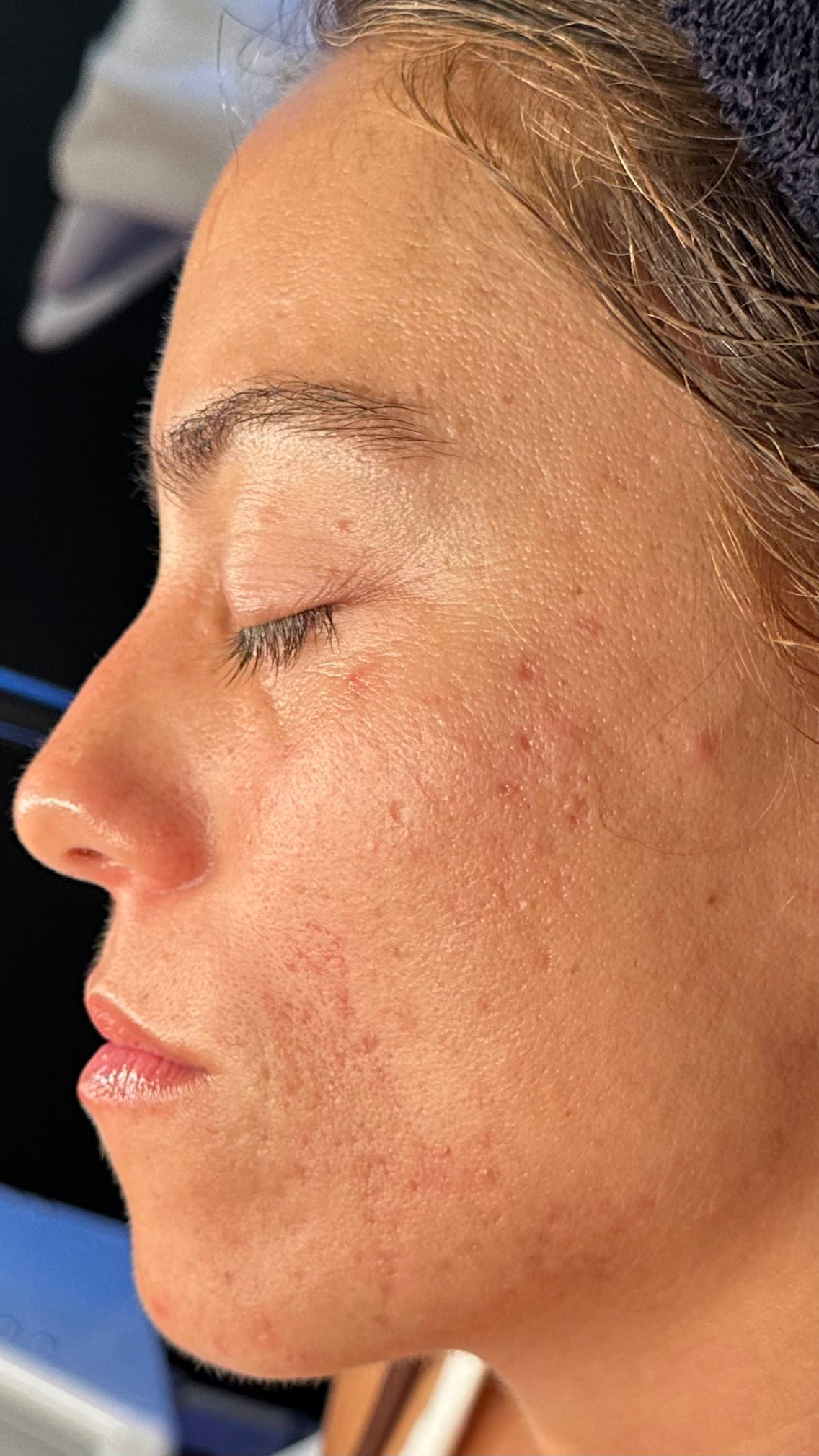Ever wonder what that celebrity glow is all about? It might just be the secret weapon of dermaplaning – a simple yet effective exfoliation treatment gaining popularity for its ability to reveal a smoother, brighter complexion. But if you're new to dermaplaning, the process might seem a bit intimidating. Fear not! This guide will walk you through what to expect during your first dermaplaning appointment, ensuring a relaxing and rewarding experience.
What exactly is Dermaplaning?
In search of a smoother, brighter you? Dermaplaning offers a non-invasive solution! The peach fuzz (vellus hair) and dead skin cells is removed gently with a sterile surgical blade, resulting in a refreshed and radiant appearance. This process provides several benefits, including:
- Smoother, more radiant skin: By removing your dead skin cells, dermaplaning reveals a brighter, more even-toned complexion.
- Enhanced product penetration: With the top layer of dead skin gone, skincare products can penetrate deeper, maximizing their effectiveness.
- Improved makeup application: A smoother canvas allows makeup to glide on effortlessly and creates a flawless finish.
- Reduced appearance of fine lines: While dermaplaning doesn't target wrinkles directly, the smoother texture can minimize the appearance of fine lines.
Is Dermaplaning Right for You?
Dermaplaning is generally well-tolerated by many skin types, except for those with active acne, rosacea, or severely irritated skin. It's always best to consult with a dermatologist or licensed esthetician before scheduling your first appointment, especially if you have any concerns or pre-existing skin conditions.
Here are some good candidates for dermaplaning:
- Individuals with dull, rough skin texture
- Those looking to improve the absorption of skincare products
- People who want a smoother canvas for makeup application
- Anyone concerned about the appearance of peach fuzz
Preparing for Your First Dermaplaning Appointment
Once you've decided to give dermaplaning a try, here's what you can do to prepare for your first appointment:
- Schedule with a qualified professional: Look for a licensed esthetician with experience performing dermaplaning treatments.
- Consult beforehand: Discuss your goals, medical history, and any skin concerns you may have during the consultation.
- Discontinue certain medications: Some medications, like blood thinners, may need to be stopped temporarily before dermaplaning. Discuss this with your doctor or esthetician beforehand.
- Avoid sun exposure: Excessive sun exposure can make your skin more sensitive. Try to minimize sun exposure for a few days leading up to your appointment.
- Skip make-up: Arrive at your appointment with a clean, makeup-free face.
What to Expect During Your Dermaplaning Treatment
Here's a breakdown of what typically happens during a dermaplaning treatment:
- Consultation: The esthetician will review your medical history, discuss your goals for treatment, and answer any questions you may have.
- Skin cleansing: Your face will be cleasned thouroughly by removing any make-up and oils on the skin.
- Dermaplaning process: The esthetician will hold your skin taut and gently glide the sterile blade at a 45-degree angle across your face, removing dead skin cells and vellus hair. You might feel a slight scraping sensation, but the treatment is generally painless.
- Skin soothing: After the exfoliation, a calming toner or mask may be applied to soothe and hydrate the skin.
- Sunscreen application: Since dermaplaning removes the top layer of skin, making it more sensitive to the sun, a broad-spectrum sunscreen with SPF 30 or higher will be appliedto protect your skin.
- Post-treatment instructions: The esthetician will provide you with specific instructions on how to care for your skin after dermaplaning, which may include avoiding harsh skincare products like retinoids, exfoliation, and excessive sun exposure.
The entire dermaplaning treatment typically takes about 30 minutes.
Recovery and Aftercare
Dermaplaning is a well-tolerated treatment with minimal downtime. Here's what to expect after your appointment:
- Slight redness: Your skin may appear slightly red immediately after the treatment, but this usually subsides within a few hours.
- Increased sun sensitivity: For a few days after your dermaplaning treatment, your skin may be more sensitive to UV exposure. It important to wear sunscreen with SPF 30 or higher daily, even on cloudy days.
- Maintain a gentle skincare routine: For a few days after treatment, stick to gentle cleansers and moisturizers. Avoid harsh scrubs or exfoliating products since this treatment is exfoliating.
How Often Should You Get Dermaplaning?
Vellus hair typically grows back within 2-4 weeks after dermaplaning. However, the frequency of your appointments will depend on your individual goals and hair growth rate. Here's a general guideline:
- For maintaining a smooth complexion and promoting product penetration:Consider getting dermaplaningevery 4-6 weeks.
- For minimizing the appearance of vellus hair: More frequent treatments (every 3-4 weeks) might be necessary.
Consulting your esthetician can help you determine the optimal treatment schedule for your specific needs.
Benefits of Dermaplaning vs. Other Exfoliation Methods
Dermaplaning offers various advantages over other exfoliation methods:
- Gentler than scrubs: Unlike abrasive scrubs that can irritate sensitive skin, dermaplaning provides a gentle yet effective exfoliation.
- More precise than chemical peels: Chemical peels can be unpredictable and potentially harsh, especially for sensitive skin. Dermaplaning offers targeted exfoliation without the risk of over-exfoliation.
- Doesn't affect skin color: Dermaplaning removes the top layer of dead skin cells, revealing your natural skin tone, without affecting pigmentation.
Dermaplaning Myths Debunked
Here are some common myths about dermaplaning addressed:
- Myth: Dermaplaning makes hair grow back thicker or darker.
- Fact: Dermaplaning removes the hair at the skin's surface, not the root. The hair may feel slightly stubbly as it regrows, but it won't grow back thicker or darker.
- Myth: Dermaplaning damages the skin.
- Fact: When performed by a qualified professional, dermaplaning is a safe and gentle treatment that removes only the top layer of dead skin cells.
- Myth: Dermaplaning is only for removing facial hair.
- Fact: While it effectively removes vellus hair, dermaplaning's primary benefit is exfoliation, which improves skin texture and promotes a brighter complexion.
Dermaplaning is a safe, effective, and affordable. This treatment can help unveil a smoother canvas, awaken a radiant glow, and bring new life to your complexion. It's a gentle treatment that can be incorporated into your skincare routine for a refreshed and youthful appearance. By understanding what to expect during your first appointment, the recovery process, and the overall benefits, you can decide whether dermaplaning is the right choice for you. Remember, consult with a licensed esthetician to discuss your individual needs and get the most out of this popular skincare treatment.
If you’re near the Huntington Beach area and would like to book at Ballanced Aesthetics click below.
https://ballancedaesthetics.square.site/





